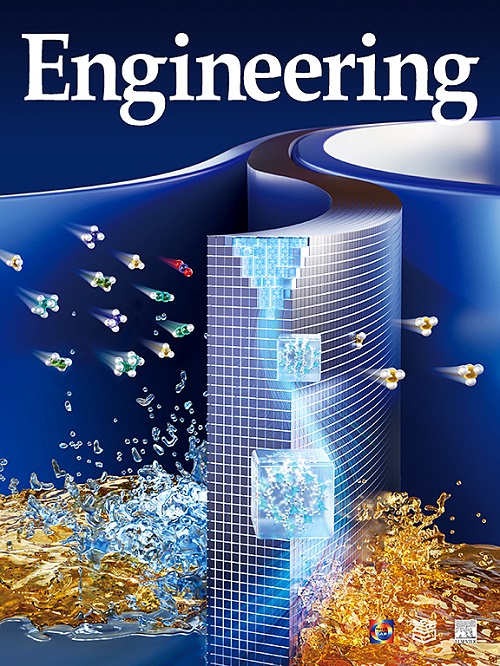年轻小鼠粪便中的微生物群通过粪便移植使老年小鼠皮肤年轻化
IF 11.6
1区 工程技术
Q1 ENGINEERING, MULTIDISCIPLINARY
引用次数: 0
摘要
在健康老龄化的背景下,皮肤老化是一个日益突出的话题。在衰老过程中,皮肤的屏障功能会减弱,含水量会降低,皱纹开始形成,肠道微生物群的组成也会发生变化。然而,肠道微生物群与皮肤老化之间的关系仍不清楚。在这项研究中,我们利用年轻小鼠的粪便,通过粪便微生物群移植(FMT)探索了老年小鼠的皮肤年轻化。研究结果表明,粪便微生物群移植后,老年小鼠的保水性增强,角质层增厚,胶原蛋白含量增加,上皮细胞分化改善。值得注意的是,FMT 特别增加了老年小鼠体内乳酸杆菌和乳球菌的丰度,而未经处理的老年小鼠体内几乎检测不到这两种菌。非靶向和靶向代谢组学分析表明,FMT 显著提高了老年小鼠粪便和血清中色氨酸(Trp)及其微生物群代谢物(如吲哚-3-乳酸(ILA))的水平。Trp和ILA似乎都能激活芳基烃受体(AhR),促进表皮细胞分化,从而使衰老的皮肤恢复青春。总之,年轻小鼠的FMT通过Trp代谢细菌(乳酸杆菌和乳球菌)和Trp衍生代谢物使衰老皮肤恢复活力,这表明针对Trp代谢物的干预措施可有效改善皮肤衰老。本文章由计算机程序翻译,如有差异,请以英文原文为准。
Skin Rejuvenation in Aged Mice by Fecal Transplantation Microbiota from Young Mice Feces
Skin aging is an increasingly prominent topic in the context of healthy aging. During the aging process, the skin’s barrier function diminishes, its water content decreases, wrinkles begin to form, and changes occur in the gut microbiota composition. However, the relationship between gut microbiota and skin aging remains unclear. In this study, we explored skin rejuvenation in aged mice through fecal microbiota transplantation (FMT) using feces from young mice. The results demonstrated enhanced water retention, thickened stratum corneum, increased collagen content, and improved epithelial cell differentiation in aged mice following FMT. Notably, FMT particularly increased the abundance of Lactobacillus and Lactococcus in aged mice, which were nearly undetectable in untreated aged mice. Non-targeted and targeted metabolomics analyses indicated that FMT significantly elevated levels of tryptophan (Trp) and its microbiota metabolites (e.g., indole-3-lactic acid (ILA)) in the feces and serum of aged mice. Both Trp and ILA appeared to rejuvenate aged skin by activating the aryl hydrocarbon receptor (AhR) to promote epidermal cell differentiation. In conclusion, FMT from young mice rejuvenated aged skin via Trp-metabolizing bacteria (Lactobacillus and Lactococcus) and Trp-derived metabolites, suggesting that interventions targeting Trp metabolites may effectively improve skin aging.
求助全文
通过发布文献求助,成功后即可免费获取论文全文。
去求助
来源期刊

Engineering
Environmental Science-Environmental Engineering
自引率
1.60%
发文量
335
审稿时长
35 days
期刊介绍:
Engineering, an international open-access journal initiated by the Chinese Academy of Engineering (CAE) in 2015, serves as a distinguished platform for disseminating cutting-edge advancements in engineering R&D, sharing major research outputs, and highlighting key achievements worldwide. The journal's objectives encompass reporting progress in engineering science, fostering discussions on hot topics, addressing areas of interest, challenges, and prospects in engineering development, while considering human and environmental well-being and ethics in engineering. It aims to inspire breakthroughs and innovations with profound economic and social significance, propelling them to advanced international standards and transforming them into a new productive force. Ultimately, this endeavor seeks to bring about positive changes globally, benefit humanity, and shape a new future.
 求助内容:
求助内容: 应助结果提醒方式:
应助结果提醒方式:


